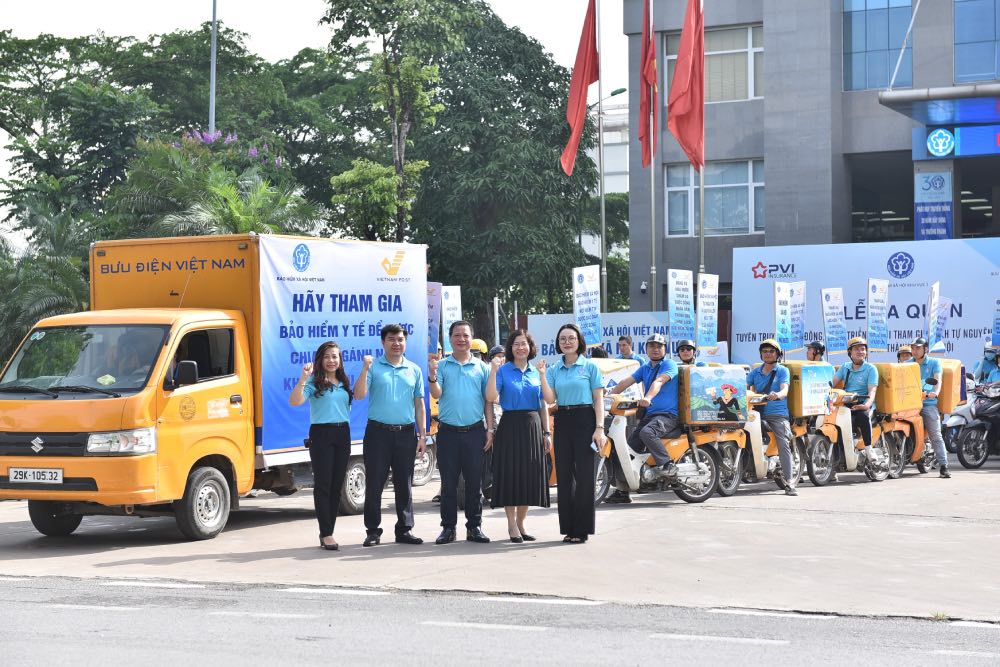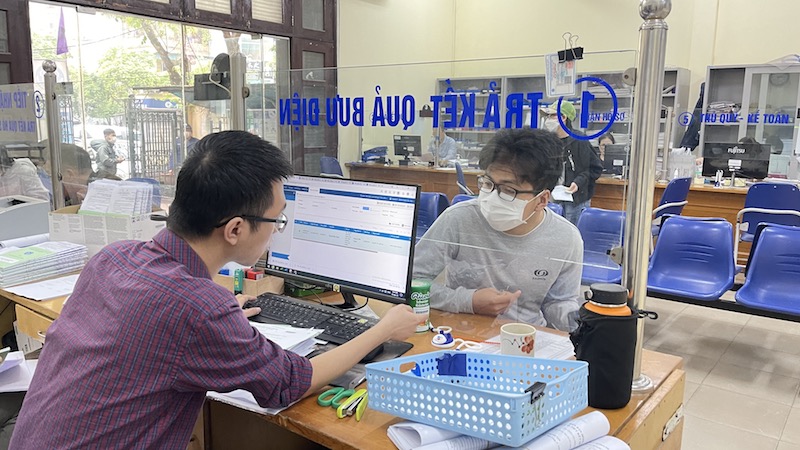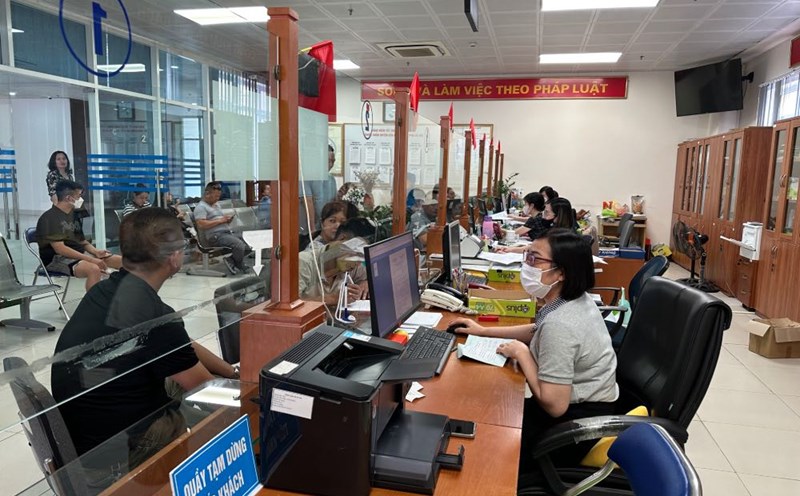The number of people participating in social insurance, health insurance, and unemployment insurance has increased rapidly over the years
On June 15, Mr. Nguyen Ngoc Huyen - Director of Social Insurance Region I (Hanoi) said that in the capital, the number of people participating in social insurance, health insurance, and unemployment insurance has increased rapidly over the years. Social Insurance of Region I has completed and exceeded the assigned plan and ensured the completion of assigned targets according to the roadmap.
Accordingly, the number of people participating in health insurance increased from 552,308 people in 1995 (accounting for 13.9% of the population) to 4.1 million people in 2010 (accounting for 62.6% of the population), increasing to 5.8 million people in 2016 (health insurance coverage rate reached 81.9%), increasing over 7.23 million people in 2020. To date, the number of people participating in health insurance is 8.17 million people, an increase of over 7.6 million people, an increase of 14.8 times compared to 1995, the health insurance coverage rate reached 95.51% of the population.
The number of people participating in compulsory social insurance increased from 316,448 in 1995 to over 1 million in 2010, increasing to 1,797,337 in 2020. To date, the number of people participating in compulsory social insurance is over 2.2 million people.
The number of people participating in voluntary social insurance increased from 891 in 2008 to 4,921 in 2010, increasing to 48,674 in 2020. To date, the number of people participating in voluntary social insurance is over 112,000 people, an increase of over 111,000 people, an increase of 126 times compared to 2008, accounting for 3.51% of the working age force.
The number of people participating in unemployment insurance increased from 701,109 in 2009 to 949,178 in 2010, increasing to 1,732,778 in 2020. To date, the number of people participating in unemployment insurance is over 2.1 million, an increase of over 1.4 million people, an increase of over 3 times compared to 2009, accounting for 45.03% of the working age force.

The City Social Insurance pays special attention to collection work, has implemented many solutions every year to carry out collection work, so the annual revenue increases, always reaching and exceeding the targets assigned by Vietnam Social Insurance, specifically:
Social insurance revenue increased from VND 116.7 billion in 1995 to VND 12,004 billion in 2010, increasing to VND 47,234.1 billion in 2020. In 2024, the total revenue from social insurance, health insurance, and unemployment insurance will be VND 70,577.2 billion, an increase of VND 70,460.5 billion, an increase of 604.8 times compared to 1995, reaching 105% of the Plan. In the first 6 months of 2025, the revenue was over VND 38,300 billion.
Ensuring the rights of social insurance and health insurance participants
The capital Hanoi is the place with the largest number of people receiving monthly pensions and social insurance benefits in the country; including many senior officials in Party and State agencies, armed forces, many revolutionary veterans, meritorious people... but in recent years, the Social Insurance of Region I has coordinated with the Bank and Post Office to perform the task of paying monthly pensions and social insurance benefits in a timely, complete and correct manner before the 10th of each month.
In 1995, pensions and monthly social insurance regimes were settled and paid to 224,348 people with an amount of VND 592 billion; by 2024, there were 596,000 people with VND 45,131 billion (an increase of 76.2 times compared to 1995); in the first 6 months of the year, there were over 596.5 thousand people with an amount of over VND 24.5 trillion, the monthly pension and social insurance payment rate through personal accounts reached 99.05%.
In 30 years of providing medical examination and treatment (KCB) according to the provisions of the Charter and Law on Health Insurance, over 151.3 million people with health insurance cards have received medical examination and treatment under the health insurance regime, with a total expenditure on health insurance medical examination and treatment of over 168,067 billion VND, including tens of thousands of patients with serious diseases such as cancer, cardiovascular disease, chronic diseases, and high costs, which have been fully paid by the Social Insurance agency in accordance with regulations.
The number of people receiving health insurance treatment has increased rapidly over the years: in 1995 there were 1.6 million people receiving health insurance treatment, the cost of health insurance treatment was 320 billion VND; in 2005 there were 3 million people, the cost of health insurance treatment was 567.8 billion VND; in 2010 there were 5.3 million people, the cost of health insurance treatment was 3,462.1 billion VND, in 2020 there were 10.6 million people, the cost of health insurance treatment was 18,335 billion VND; by 2024 there were 13.2 million people, the cost of health insurance treatment was 25,765 billion VND.
In the first 6 months of 2025, health insurance benefits will be guaranteed for over 6 million people with an amount of over VND 13,000 billion.

Administrative reform and information technology application have always been implemented by the Social Insurance of Region I. In particular, in 2012, the City People's Committee invested in a project to apply information technology, fully equip working equipment and software to receive and return administrative procedure results to the one-stop department at the headquarters of Social Insurance Region I and Social Insurance of districts, towns and cities to shorten transaction time, ensure publicity and transparency of administrative procedures, and prevent harassment of civil servants when performing official duties. Up to now, administrative procedures have been simplified in the direction of creating maximum convenience for participants and beneficiaries of social insurance and health insurance policies.
Social Insurance of Region I has promoted the implementation of electronic records transactions, implementing level 4 online public services on declaration, payment, and payment of social insurance and health insurance to help reduce administrative costs for employers such as travel costs to submit and receive documents and document costs (people and businesses can interact and transact with social insurance agencies 24/7 as quickly, reform, and as conveniently) creating conditions for officers and civil servants of social insurance agencies to focus on professional work to handle administrative procedures faster.
To date, over 99.8% of units participating in social insurance and health insurance have conducted electronic file transactions.











